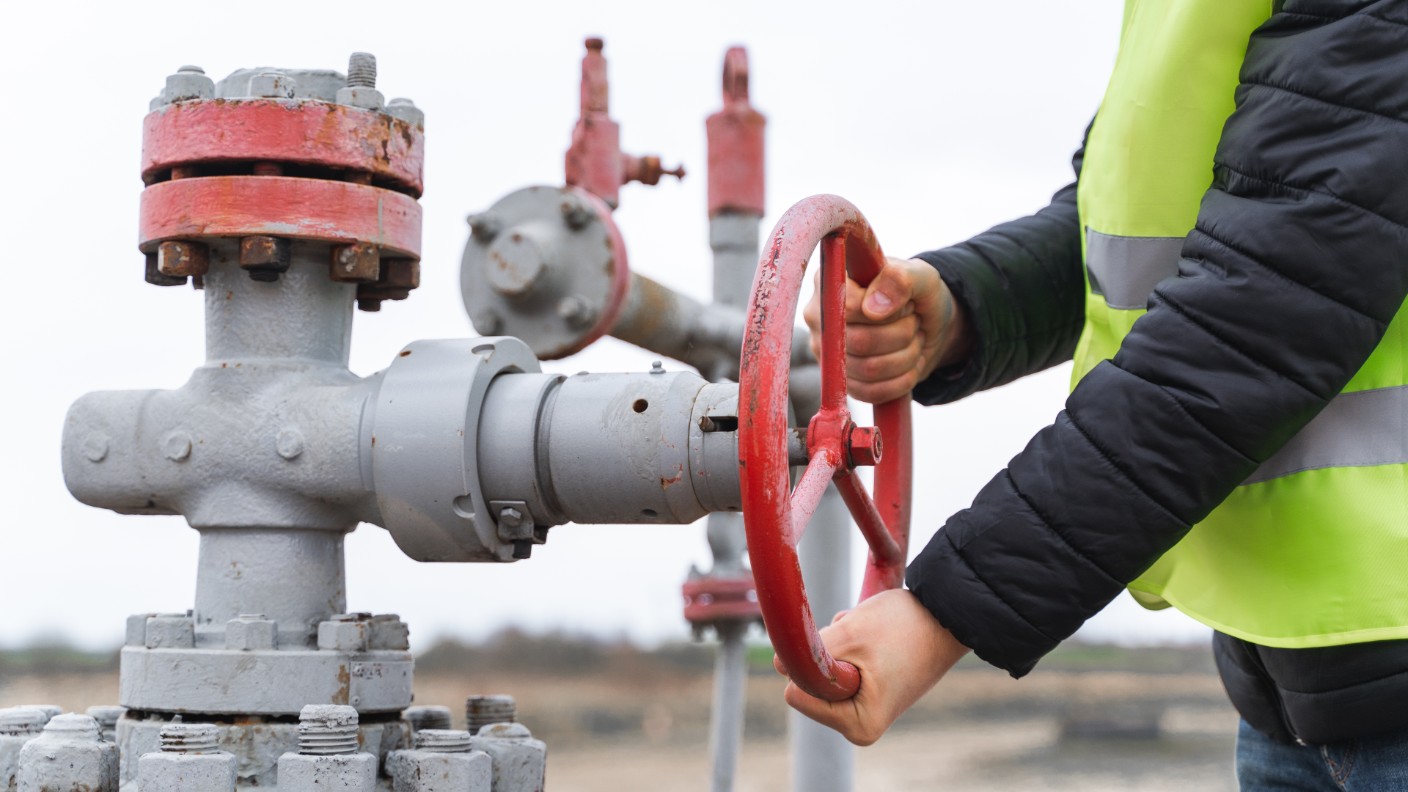Natural gas prices drop: is this good news for your energy bills?
Natural gas prices have dropped over the past couple of weeks, but this is unlikely to filter through to consumers and businesses until 2024.


Following Putin’s invasion of Ukraine at the beginning of 2022, gas prices in Europe jumped as the region’s energy supply became a major casualty of the conflict. When European leaders scrambled to find alternative supplies – to reduce dependence on Russia – Putin started to turn off the taps. After reducing flows during the summer, Russia cut off gas supplies through Nord Stream 1 – the largest single supply route for Russian gas to Europe – at the end of August.
Prices surged following the move by Putin to strangle Europe’s energy supplies. UK natural gas futures hit 670p a therm in the fourth week of August, up 460% in a year. TTF, Europe's wholesale gas price, jumped above €330 per megawatt-hour in the fourth week of August, up 650%.
Over the last few weeks, natural gas prices across Europe have slumped
Gas prices have fallen rapidly since the summer peaks. At the time of writing the European gas benchmark is back below €100 – the lowest level since June – while the UK’s benchmark sits around 180p.
MoneyWeek
Subscribe to MoneyWeek today and get your first six magazine issues absolutely FREE

Sign up to Money Morning
Don't miss the latest investment and personal finances news, market analysis, plus money-saving tips with our free twice-daily newsletter
Don't miss the latest investment and personal finances news, market analysis, plus money-saving tips with our free twice-daily newsletter
This slump in prices is due to the expectation that Europe will manage to avoid the worst this winter. While 80% of Russian gas supplies to the block are now offline (some gas is still flowing to Europe via the pipelines that transit Ukraine and Turkey) traders have managed to fill the gap with LNG (liquefied natural gas) imports.
The Lex column in the Financial Times has put some numbers on the scale of the shift. Russian supplies are down 80bn cubic metres this year, but Europe has managed to secure 50bn cubic meters of LNG imports. On top of this, demand is expected to fall by an equivalent of 60bn cubic meters. That gives 30bn cubic meters of headroom.
European leaders have done a pretty good job of encouraging users to reduce demand (high prices have also helped). Milder-than-expected weather has also played a roll in reducing demand this year.
As a result, Europe now actually has too much gas – its storage tanks have reached planned capacity weeks ahead of target (in fact the region’s storage facilities are almost full). But, and this is a big but, there is no guarantee this will continue. A cold winter could push up demand, something the region can ill afford right now. The FT estimates that a cold winter will lead to an additional 30bn cubic meters of demand, which will eat into that headroom.
Gas prices could jump again in 2023
Next year is a different case altogether. Supply to the region is likely to fall a further 40bn cubic metres next year even if the pipelines through Ukraine and Turkey remain operational. Filling this gap will be a tough ask.
The LNG market is already very competitive and there’s no guarantee that Europe will be able to muscle out deeper-pocketed Asian buyers. There’s also an infrastructure challenge. Europe lacks the infrastructure to turn LNG from a liquid back into a gas and move it across the continent, although Germany is spending billions to try and change this.
On top of these challenges, France’s ageing nuclear fleet can no longer provide a backstop to Europe’s power market that it has done in the past. This places more pressure on other power providers (mainly gas power plants) to fill the gap.
All of these factors suggest that while wholesale natural gas prices might be falling in Europe today, there’s no guarantee this trend will continue.
The market is still very volatile and uncertainty will persist throughout 2023. It does not look as if consumers and businesses will see any relief from sky-high energy prices any time soon. It could be 2024 before the market returns to some sort of normality or longer if we have two successive cold winters.
Get the latest financial news, insights and expert analysis from our award-winning MoneyWeek team, to help you understand what really matters when it comes to your finances.

Rupert is the former deputy digital editor of MoneyWeek. He's an active investor and has always been fascinated by the world of business and investing. His style has been heavily influenced by US investors Warren Buffett and Philip Carret. He is always looking for high-quality growth opportunities trading at a reasonable price, preferring cash generative businesses with strong balance sheets over blue-sky growth stocks.
Rupert has written for many UK and international publications including the Motley Fool, Gurufocus and ValueWalk, aimed at a range of readers; from the first timers to experienced high-net-worth individuals. Rupert has also founded and managed several businesses, including the New York-based hedge fund newsletter, Hidden Value Stocks. He has written over 20 ebooks and appeared as an expert commentator on the BBC World Service.
-
 Why you fear money – and how to fix it: MoneyWeek Talks
Why you fear money – and how to fix it: MoneyWeek TalksPodcast MoneyWeek's digital editor, Kalpana Fitzpatrick, speaks to financial psychotherapist Vicky Reynal about how to change your money mindset for the better.
-
 How cancelling unused direct debits could boost your pension by £37,000
How cancelling unused direct debits could boost your pension by £37,000A new year refresh of your spending could save you money and help boost your pension pot.
-
 No peace dividend in Trump's Ukraine plan
No peace dividend in Trump's Ukraine planOpinion An end to fighting in Ukraine will hurt defence shares in the short term, but the boom is likely to continue given US isolationism, says Matthew Lynn
-
 Investors need to get ready for an age of uncertainty and upheaval
Investors need to get ready for an age of uncertainty and upheavalTectonic geopolitical and economic shifts are underway. Investors need to consider a range of tools when positioning portfolios to accommodate these changes
-
 Halifax: House price slump continues as prices slide for the sixth consecutive month
Halifax: House price slump continues as prices slide for the sixth consecutive monthUK house prices fell again in September as buyers returned, but the slowdown was not as fast as anticipated, latest Halifax data shows. Where are house prices falling the most?
-
 Rents hit a record high - but is the opportunity for buy-to-let investors still strong?
Rents hit a record high - but is the opportunity for buy-to-let investors still strong?UK rent prices have hit a record high with the average hitting over £1,200 a month says Rightmove. Are there still opportunities in buy-to-let?
-
 Pension savers turn to gold investments
Pension savers turn to gold investmentsInvestors are racing to buy gold to protect their pensions from a stock market correction and high inflation, experts say
-
 Where to find the best returns from student accommodation
Where to find the best returns from student accommodationStudent accommodation can be a lucrative investment if you know where to look.
-
 The world’s best bargain stocks
The world’s best bargain stocksSearching for bargain stocks with Alec Cutler of the Orbis Global Balanced Fund, who tells Andrew Van Sickle which sectors are being overlooked.
-
 Revealed: the cheapest cities to own a home in Britain
Revealed: the cheapest cities to own a home in BritainNew research reveals the cheapest cities to own a home, taking account of mortgage payments, utility bills and council tax